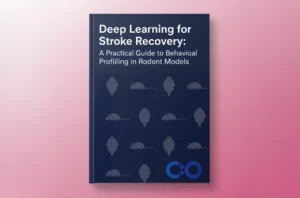

Path length refers to the cumulative distance the zebrafish swims from the starting point to the goal platform. This metric is extracted via automated video tracking systems that map the fish’s real-time location within the test tank.
In a typical VWM setup, zebrafish are introduced into a circular or rectangular arena containing a submerged platform, often associated with a visual cue like a high-contrast pattern. Over successive trials, zebrafish are expected to form a spatial association and learn to navigate efficiently.
Shorter path lengths—especially as trials progress—indicate increased navigational efficiency, which reflects spatial learning, memory consolidation, and cognitive strategy development.
In cognitive behavioral experiments, especially those assessing spatial learning and memory, path length is a keystone metric. It transforms movement into meaning—quantifying not just whether a subject reaches a goal, but how it does so. Far from being a redundant measurement, path length reveals the trajectory architecture behind behavioral decisions, encoding the animal’s navigational strategy, spatial understanding, and cognitive flexibility.
When paired with escape latency, path length acts as a discriminating tool, helping researchers differentiate between effective learning and superficial performance improvements. This is particularly vital in experiments with zebrafish, whose swimming behavior is susceptible to modulation by motor vigor, anxiety, environmental conditions, or pharmacological treatments.
Let’s explore the core reasons why path length matters—and what it reveals that latency alone does not.
Escape latency measures the temporal dimension of performance—how fast the zebrafish reaches the goal. While this metric is important, it can be deceiving when interpreted in isolation.
Imagine two zebrafish reach the platform in 15 seconds. One swims directly from the start point to the goal in a clean trajectory. The other darts rapidly but chaotically, circling the tank, following the walls, and stumbling upon the platform by chance. Same latency, but drastically different path lengths.
This is where path length shines. It allows researchers to identify cases where:
By normalizing latency with distance traveled, path length exposes the underlying strategy: was the subject exploring, guessing, or applying learned spatial rules?
In other words, path length serves as a spatial diagnostic, revealing whether the animal’s approach was goal-directed or stochastic.
One of the most powerful uses of path length is in tracking trial-by-trial learning. When plotted across successive trials or days, path length produces a behavioral learning curve—a visible signature of cognitive adaptation.
In naive zebrafish, early trials in the VWM often show:
Over time, as spatial learning occurs, we observe:
This trajectory mirrors what we see in mammalian models of hippocampus-dependent learning. In fact, Gerlai et al. (2000) showed that such reductions in path length are indicative of true spatial learning rather than habituation or motor repetition.
Furthermore, this decline in path length is often steeper and more consistent than latency reductions, making it a cleaner signal for evaluating learning rate, particularly in pharmacological or genetic studies where motor function might be compromised.
Path length is directly linked to the type of search strategy employed. This makes it an essential variable for classifying navigation patterns and mapping the shift from non-cognitive to cognitive performance modes.
By evaluating the rate and nature of these transitions, path length becomes a behavioral tracer of cognitive state. It shows when the animal shifts from instinct-driven movement to memory-guided navigation, which is especially valuable in experimental models of learning impairments, neuroplasticity, or spatial disorientation.
Path length can also be used to test cognitive flexibility—how well a zebrafish can adapt when task conditions change. For example, in reversal learning paradigms where the platform location is switched:
This flexibility has applications in modeling autism spectrum disorders, frontal lobe deficits, and dopaminergic system dysfunction, all of which are known to impair adaptive navigation and increase perseverative behavior.
Ultimately, path length is a topological signature of cognition—a readout of how zebrafish perceive, interpret, and act upon their environment. It reveals whether performance is truly learned or simply performed, whether behavior is exploratory or goal-driven, and whether spatial memory is forming or faltering.
In behavioral neuroscience, especially with zebrafish, no single metric tells the whole story. But path length, when paired with latency, search pattern analysis, and zone preference, forms part of a powerful toolkit for understanding the geometry of cognition.
It gives us a map of the mind—not just where the animal is going, but how it chooses to get there.
Path efficiency is not just a behavioral readout—it is a neurobiological expression of spatial cognition. When zebrafish demonstrate efficient paths in the Visual Water Maze (VWM), they are not merely swimming—they are recalling spatial cues, integrating them with real-time environmental feedback, and executing goal-directed motor strategies. Each of these components is orchestrated by a distributed network of brain regions and neurochemical systems.
Studying path efficiency thus provides researchers with a behavioral fingerprint of neural integrity. When efficiency drops, it often reflects a specific circuit-level dysfunction, making it a powerful tool for investigating the functional architecture of zebrafish cognition.
The dorsolateral telencephalon (Dl) in zebrafish is widely recognized as the functional homolog of the mammalian hippocampus. It plays a central role in forming spatial representations, integrating visual landmarks, and consolidating spatial memory.
Lesion studies (Broglio et al., 2003) have shown that damage to the Dl leads to:
This is highly analogous to hippocampal lesion effects in rodents and humans, where subjects fail to develop accurate spatial maps and rely on inefficient or repetitive movement patterns.
The optic tectum, equivalent to the superior colliculus in mammals, processes visual input essential for orienting toward external cues. In the VWM, zebrafish must detect and discriminate visual patterns marking the goal zone. Impairments in the tectum result in:
The zebrafish cerebellum is involved in fine-tuning motor output and adjusting swim trajectories in response to feedback. While it may not encode spatial memory, it modulates path smoothness and corrective turning, both of which influence overall path efficiency. Dysregulation here leads to:
Regions involved in arousal, stress response, and motivational states can also indirectly affect path efficiency. For example, heightened anxiety may shift navigation strategies toward thigmotaxis, elongating paths despite intact cognitive mapping. These effects are mediated by stress-responsive circuits including the hypothalamus and habenula.
Beyond regional anatomy, neurotransmitter systems exert powerful effects on navigation strategy, learning rate, and behavioral flexibility. Disruption of these systems often causes a breakdown in path efficiency without necessarily affecting latency—making this metric particularly sensitive to subtle cognitive impairments.
The NMDA receptor, a subtype of glutamate receptor, is a well-established molecular gateway to learning and memory. It mediates synaptic plasticity and long-term potentiation (LTP), both essential for encoding spatial information.
Pharmacological blockade of NMDA receptors in zebrafish has been shown to:
These deficits are especially pronounced in early acquisition phases, where NMDA-dependent plasticity is crucial for forming cue-place associations (Parker et al., 2013).
Dopamine plays a central role in motivation, attention, and executive function, all of which shape spatial navigation. In zebrafish, dopaminergic signaling modulates behavioral flexibility and cue salience. Disruption of dopamine receptors (e.g., D1/D2 antagonists) leads to:
These effects mirror findings in rodent models of Parkinson’s disease and frontal lobe dysfunction, where dopamine depletion impairs path planning and increases trajectory variability.
Both systems influence navigation quality rather than speed, making path efficiency a particularly informative endpoint in pharmacological studies.
Because of its multi-system dependence, path efficiency acts as a behavioral integrator—reflecting the concerted function of sensory processing, cognitive mapping, motor execution, and neurochemical modulation.
This is especially important in models of:
Path efficiency in the Visual Water Maze is more than a number—it is a neural barometer of cognitive organization. It translates the architecture and chemistry of the brain into quantifiable movement patterns, allowing researchers to detect subtle but significant disruptions in spatial processing.
Whether used to profile genetic mutations, assess drug effects, or model human cognitive disorders, path efficiency offers high-resolution insight into how zebrafish brains solve problems—and what happens when they cannot.
Path length is emerging as a translational bridge between animal models and human cognitive testing. In both domains, spatial disorganization and inefficient routes signal cognitive decline.
Exposure to neurotoxic agents like lead, bisphenol A, or pesticides increases path length without always affecting speed or motivation, making it a sensitive early biomarker for subtle cognitive deficits (Eddins et al., 2010).
Path length, though inherently simple in definition, is rich with cognitive meaning—if interpreted with methodological precision and paired with complementary metrics. By itself, path length reflects how far a zebrafish traveled before reaching a submerged platform. But when viewed in isolation, it may mask the why behind that distance: was it uncertainty? distraction? cognitive inflexibility? or perhaps simply swim speed variation?
To extract high-resolution insights from path length, researchers must contextualize it—both within the behavioral ecology of the animal and within the design of the experimental paradigm. Below are key strategies to maximize the interpretive power of path length in zebrafish Visual Water Maze (VWM) studies.
No single metric can fully explain zebrafish spatial cognition. Path length must be combined with other measurements to form a behavioral profile. Together, these metrics form a triangulated dataset that improves interpretability and guards against misattribution.
Recommended complementary metrics include:
By cross-analyzing these metrics, researchers can confidently distinguish between random search, memory-guided navigation, or maladaptive behavioral patterns.
Path length is inherently tied to the geometry of the testing environment. Tanks of different sizes, shapes, or cue configurations can yield drastically different path lengths—even for the same task difficulty.
To ensure within-study consistency and between-study comparability, normalization strategies are essential:
This normalization is especially crucial when comparing performance across treatment groups, genotypes, or developmental stages, where size and swim capabilities may differ.
Path length is not monolithic; its internal structure matters. Zebrafish navigation often consists of multiple distinct phases within a single trial:
By segmenting path data, researchers can detect shifts in cognitive strategy or attention lapses. For example:
Segmenting also enables within-trial learning analysis, valuable for studying how animals resolve uncertainty in real-time.
Advanced computational methods now allow researchers to classify swim paths into defined search strategies, transforming path length from a single scalar into a strategy-rich behavioral profile.
These techniques allow for multi-dimensional behavioral phenotyping, wherein path length becomes a descriptor within a larger cognitive signature. This is particularly useful for:
When interpreted with sophistication and contextual awareness, path length evolves from a simple distance metric into a multidimensional window on cognition. It reveals not just how far a zebrafish swam, but why, how, and what it learned in the process.
Combining path length with complementary metrics, normalizing for spatial variables, dissecting trajectories by phase, and applying modern computational tools transforms it into a powerful proxy for cognitive health, spatial strategy, and decision-making.
This transformation—from scalar to behavioral signature—is precisely what enables the Visual Water Maze to act not just as a test, but as a behavioral assay of neural computation.
As zebrafish models evolve, behavioral metrics like path length are being integrated with whole-brain imaging, optogenetics, and genetic circuit mapping. The goal is not just to observe behavior, but to link it causally to cellular and molecular events.
Path length serves as a behavioral biomarker that reflects the integrity of sensory integration, memory formation, motivation, and motor control. Its power lies in its granularity—capturing micro-changes in strategy that gross measures like latency might miss.
Path length in the Visual Water Maze is more than a distance—it’s a behavioral narrative. It tells us how the zebrafish learns, adapts, refines its search, and applies memory to solve spatial challenges. For researchers seeking to understand the architecture of learning and memory, path length offers a direct, measurable window into cognitive processes.
As we push forward into the era of precision neuroscience, where behavior meets big data, metrics like path length will remain central—not only for understanding zebrafish cognition but for translating these insights into human health, disease, and discovery.
